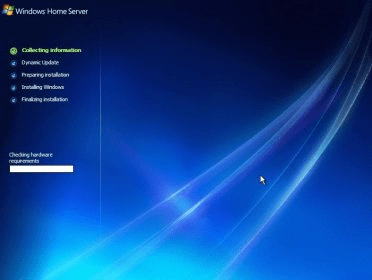
First we must make clear that Windows Home Server is not an operating system for personal computers for everyday use, nor an operating system to mount an HTPC for the living room of the house. This is the bet by Microsoft to centralize information from households in one place.
Today is common to have more than one computer at home, in many cases, one for each family member, consistent with the work of administration, the hassle of transferring files, backups and sharing content; Windows HomeServer attacks all these fronts.
In the case of backups, it allows us to perform up to ten different computers, storing data from all of them without taking up extra space in case of finding files repeated, that is, if we have a single file on two computers just saved us a copy this.
Not only that, it also make copies daily and keeps older versions of files (shadow copies), similar to how Time Machine works on Leopard, so you can retrieve copies of the files from previous days.
Windows Home Server will also enable us to sharing files in a simple way, through shared folders where we can copy the files for easy access from any computer. These folders are classified depending on the type of content stored on them: music, pictures, videos, ...
These files not only can be accessed by other computers, but we can do streaming from other devices, such as an XBox 360, or others that support Windows Media Connect, like some TVs. more
Comments (1)